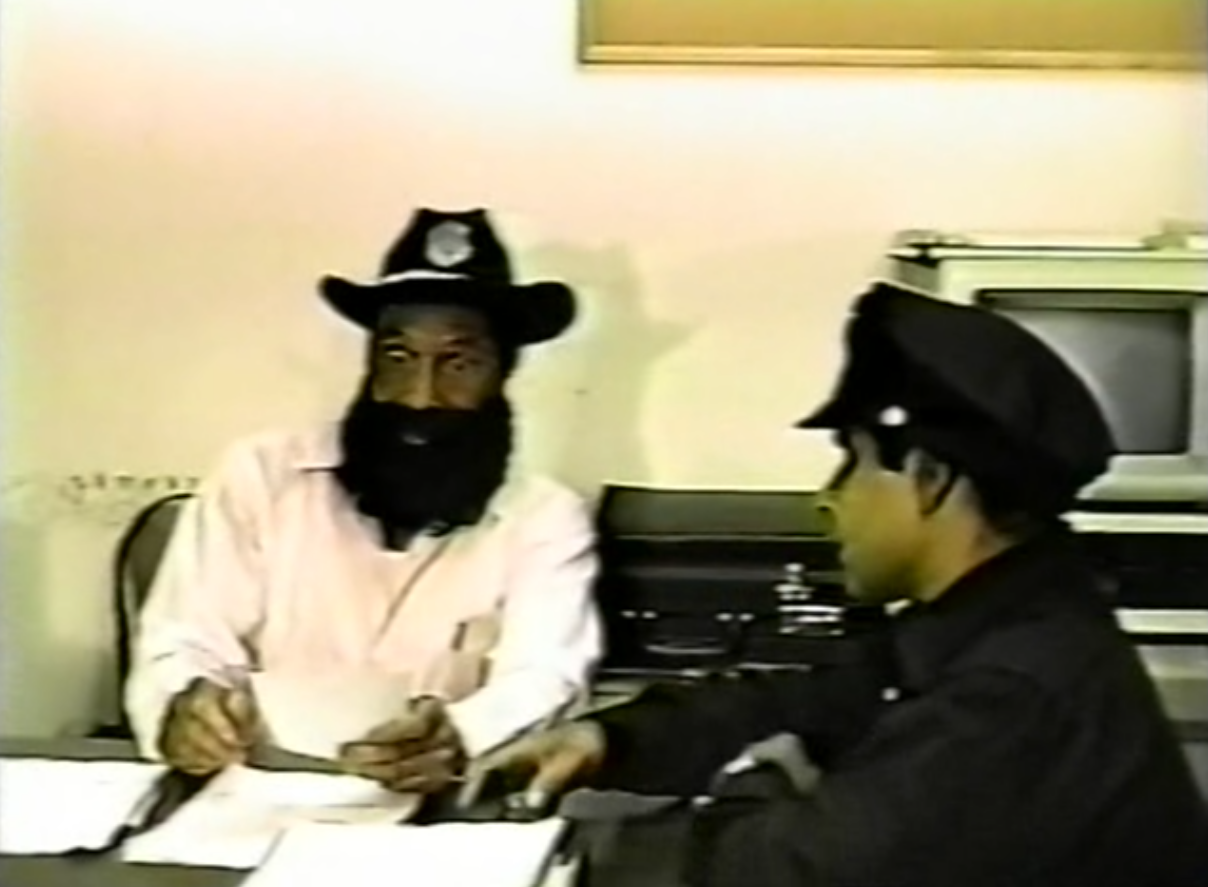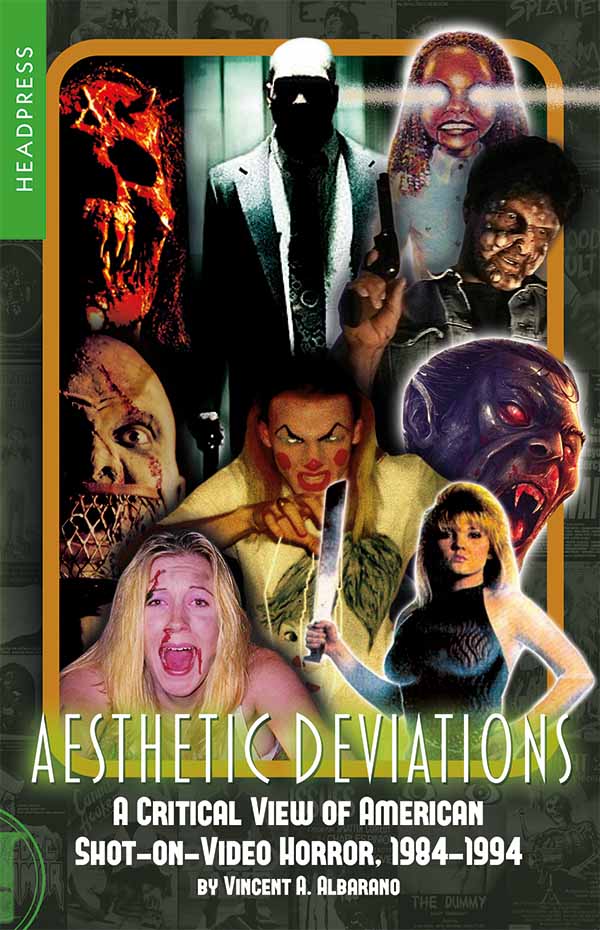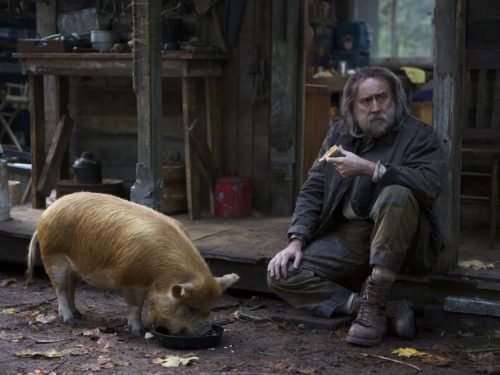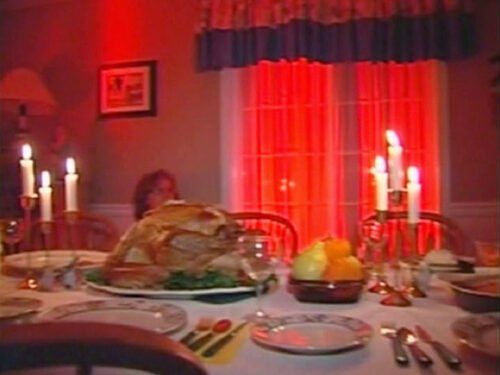Infamous for its stripped-down techniques and general disconnection with cinematic logic, Jess Turner’s SOV zombie film alternates boredom, incredulity, and outsider genius in equal measure
Shot-on-video horror is such an amorphous, confounding strain of genre filmmaking that even those well-versed in its various mutations can feel they’ve come up short. In my own writing efforts, I’ve found that there’s simply no way to cover all bases, to address every odd and end. Classic titles get championed and positioned into some sort of canon, whereas the obscurities and never-rans continue to be slighted. As much as the lure of obscurity draws me in my research and writing, I can’t deny that there are still many oversights in critical inquiry into video horror. As much as titles like Video Violence, Twisted Issues, and Splatter Farm retain a peculiar appeal, an aura that rightfully designates them as some of the premier works in the cycle, there’s no excuse not to shine light on the lesser-regarded features that litter America’s video underground.
For all its aesthetic innovations, SOV horror is not necessarily to be celebrated for diversity or representation. There’s still a great deal of work to be done to afford artists of color, of alternative sexualities and gender identities their place in the history of underground horror cinema on video. One of SOV horror’s first independent successes was Chester N. Turner’s Black Devil Doll from Hell, a film whose infamy remains long after the mystery of its creator and production have been settled. Turner, one of very few Black directors working in video horror at the time, shot his film entirely on the South Side of Chicago, with an entirely African American cast and crew. That film stands as a sort of landmark in both SOV history and bad taste filmmaking but is only part of the full story. Throughout the 1980s and into the 1990s, African American independent filmmakers like James Tucker, Christopher Michael, and Jess Turner were making their own contributions to the underground horror scene. It’s long past time that their legacies were likewise acknowledged.
I’ve only seen one of Jess Turner’s three productions, his debut feature Zombies Invade Pittsburg (his others, Nightmare on Beacon Street and the comedy Harvey’s Place, have remained elusive). That film has become somewhat infamous over the years for its stripped-down filmmaking techniques and general disconnection with cinematic logic. However, what proves to be an illuminating example of bare-bones ingenuity is unjustly obscure. It rarely appears for secondhand sale and is difficult to track down digitally. Adapted from a television production that is even more obscure, and with the seemingly interchangeable release dates of 1988 and 1996 (the latter seems to be official as the film’s credits bear that copyright), Zombies Invade Pittsburg is a special piece of the regional SOV horror puzzle, an example of a film where shoddy construction and seeming inexperience morph into something far more arresting and sublime. Turner’s first film exemplifies the point where SOV horror’s home movie aesthetics and its outsized generic ambitions meet to create a new form of film art, one that alternates boredom, incredulity, and outsider genius in equal measure. In short, it’s precisely the sort of film that proves video horror operates by its own rules, a direct descendent of the art-in-negative canon established by Stephen Thrower in Nightmare USA.
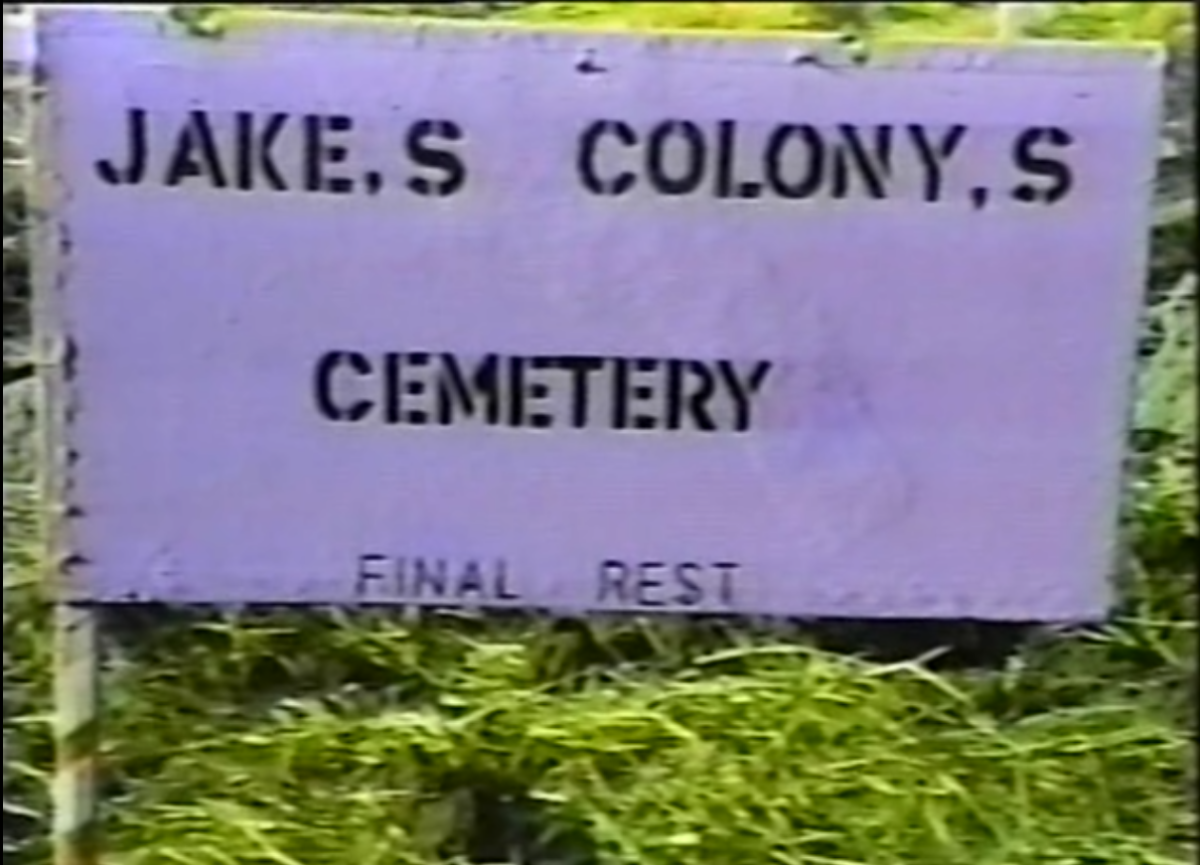
There are millions of competently made, marginally interesting studio and independent films in the annals of cinema history. Of course, by the same metric, there are arguably as many, if not more, examples of failed art that defies the very rules and standards that define the form. What makes the most essential SOV works vital is their transcendence of mere formal concepts such as good or bad, competent or incompetent. Turner’s film is a project so madly driven, so unlikely in its execution and commercial release that it defies all accepted standards of cult film practice. It is impervious to ironic sensibilities, incompatible with camp reclamation, and if we take Turner’s confidence in his vision at face value, completely unconcerned with what anyone might even try to make of it. I’ve made the claim that SOV horror often exists as art in a vacuum, but Zombies Invade Pittsburg is something even further removed from reality. It presents itself fully formed into the world, hermetically sealed within its own universe. Where one could simply dismiss Turner’s effort as inept or embarrassing along accepted standards, in reality it negates those very concepts. While any number of video auteurs can be singled out for their maverick commitment to their personal visions, Turner offers a work so convinced of its own essential nature that every component part becomes crucial even where it would prove excessive in any other case. More than anything else, I admire Jess Turner’s reckless presentation of a film and world so jarringly at odds with any other form in human expression. It’s why Zombies Invade Pittsburg never devolves into tedium, no matter how many phone conversations we watch play out in real time, or how many gore scenes are simply writhing shadows onscreen.
A careless government screw up results in a dozen barrels of hazardous toxic waste being dumped at a river delta in Pittsburg, California. Detective Packer and Officer Dillion are called to the scene and take samples for the lab, noting the fish and birds washing up dead on the shore. Captain Stefans takes their report at the precinct, learning from the lab tech that the waste could wipe out the entire city or worse. He calls the government via the numbers printed on the barrels and is given the runaround, speaking with multiple departments and recounting the entire plot of the film in real time for the next ten minutes. Soon, local news channel KNJT 6 picks up stories of missing pets and people, various hideous attacks around town, and devotes their entire program to this case. At a nearby cemetery (where all graves are more than a decade old yet covered with fresh piles of dirt), the dead begin to rise and make their way into Pittsburg. Things only get stranger from here, with tales of men eating dogs, siblings going missing, and a local shopping center plagued by vicious attacks. Packer is the only one taking things seriously while Dillion and the Captain seem to think it’s all a joke. From here, the film proceeds as a series of attacks, investigations, news broadcasts, and eyewitness interviews. Things culminate in a massacre at a local party, which sees all the guests murdered inside the house, only for their devoured remains to be discovered on the front lawn. Stefans finally cites zombies as the culprits in the attacks after a month of investigation, having identified the “master zombie” and assigns his officers to catch him. The film itself ends with no resolution after Dillion is attacked in the cemetery.
If this reads like a coherent, if mangled, plot, then you haven’t quite experienced the mundane madness of Jess Turner’s cinematic world. The total information imparted in the film could fill a 15-minute runtime, and yet we have been gifted with an 86-minute dispatch from the mind of its creator, whose importance to the production cannot be overstated. The film begins with the ominous message, “To receive the full benefit of this film, please turn off all lights.” Several minutes of credits ensue, with cartoonish letters over black static informing us that this is Jess Turner Films presenting a Jess Turner Production. True to this, Turner himself seems to have filled almost every role both on set and behind the scenes — music, costumes, camera, assistant editor, “Zombie Coordinator,” and assorted others. The rest of the credits are filled with several additional Turner names, suggesting this was a family production through and through rather than an organized attempt at independent filmmaking.
Playing Stefans himself, Turner wears a giant fake beard and Stetson hat that give him the look of a Civil War reenactor more than an officer of the law. He never leaves the police station and, save two scenes where he moves to the lobby to interrogate witnesses, does not appear anywhere other than behind his desk. As a police captain, Stefans seems to coast by on the bare minimum of effort, asking only nonsensically practical questions during his interviews, such as having his witnesses describe the smell of their assailants and the size and color of a dog being eaten by a man. It would be the perfect comic role, and Turner’s delivery veers between confused and outrageously over the top. It’s as if he sleepwalked through the role, never giving thought to how a particular line would be read or plot development received because he was convinced it would all come together as a whole. To his credit, that’s exactly what happens, and his unwavering commitment to non-acting is impressive in its own right. Not so much a case of the performance suiting the material, his turn as Stefans serves as a fascinating reminder of Turner’s control over the project. Better known SOV works like Todd Cook’s Demon Dolls and various early projects by Mark and John Polonia essentially present visions of their creators hardly divorced from reality. What results is a fascinating glimpse into the lives of these artists, their self-conscious perceptions of their own worlds and abilities played out before the camera in veritable psychodramas. In the case of Zombies Invade Pittsburg, the overall impact is an assertion of Turner’s entire personality on his filmmaking. Everything bends to his casting as the protagonist, and how one receives his presence is a fair metric for how they will engage the rest of the film.
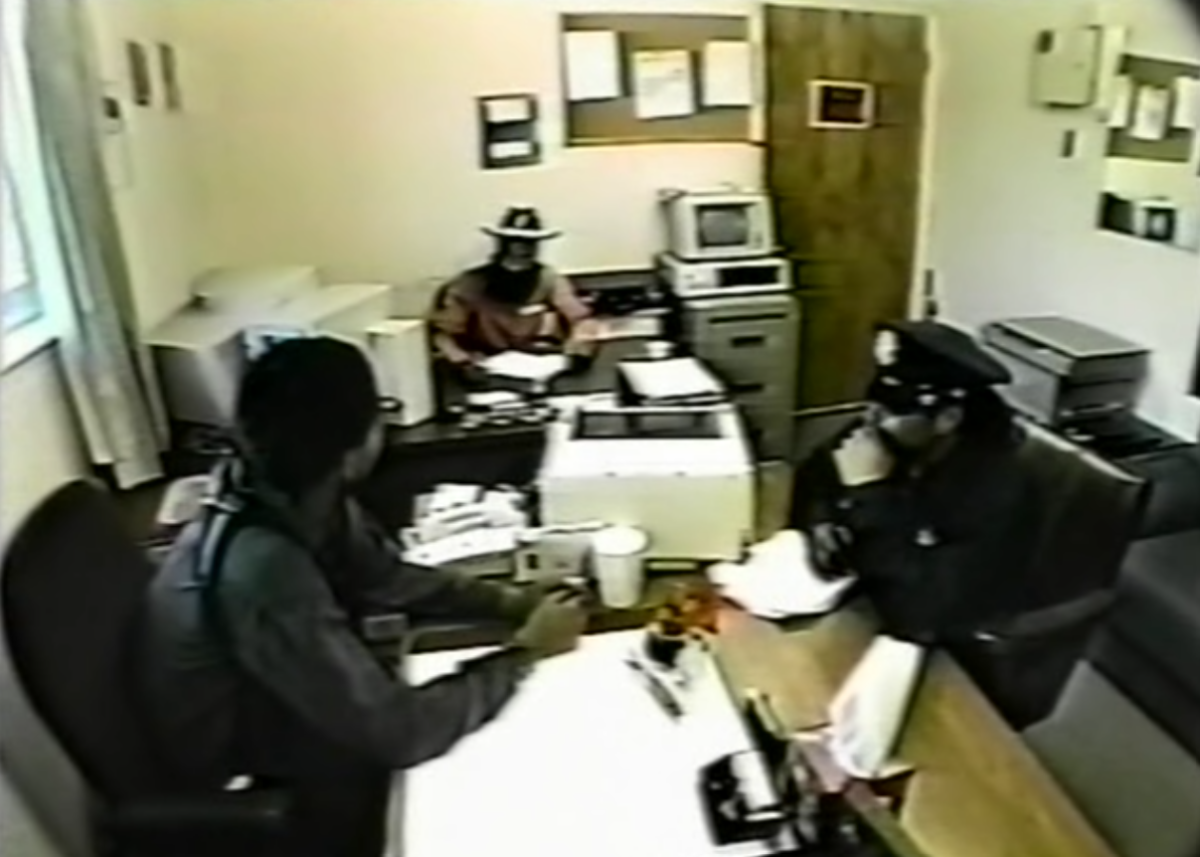
As the above summary and notes make clear, this is a film completely riddled with errors. Commenting on the flaws and shortcomings of amateur SOV productions needn’t be a derisive practice and can inform a more serious appreciation of the cycle at large. It is these aspects that set the works apart from any other strain of filmmaking, including inept celluloid exploitation efforts. There’s a negative reception at work, where the moments of ostensible aesthetic failure are the precise successes that should be emphasized. Merely competent or passable genre films are ultimately more disposable and forgettable in the long run because of their safety. I’d much rather investigate and celebrate the works produced by outsiders who just didn’t quite get it and created something far more perplexing and obsessive. In Turner’s film, the uniformly static performances don’t need to be singled out or highlighted for their badness. The point isn’t that the cast have likely never acted before, but rather that they came together and gave their time for the production to actually stand a chance on the independent video market. Discussions of performances in SOV horror releases are largely unnecessary, and often cruel, thus the monotonic reversal of good or bad acting here should stand as a compliment to the utilitarian elements present in every other aspect of the work.
On a technical level, the film’s shortcomings occasionally work toward a brilliant negation of a century’s worth of cinematic innovation. Edits are often performed by fading in and out within the same sequence, and the majority of scenes are captured as single takes with no linear cutting to provide continuity. The most impressive visual effect is the primitive chyron overlaid on the various news broadcasts, which suggest access to some kind of post-production facility that eluded countless other amateur auteurs. The film bears no improbable handheld camera techniques, and doesn’t even bother to recall the observational verité impression of many SOV works. Instead, Turner’s camera seems to have been placed where it would capture all relevant onscreen action and left largely undisturbed. At even this task it fails, as the frequent shots of characters’ waists when they move out of frame repeatedly remind us. Nocturnal scenes, meaning the majority of the zombie attacks, are frequently illegible due to poor exposure and a lack of on set lighting. Several times throughout, the camera operator’s shadow falls across the attack in progress and remains onscreen to obscure the action further. Daytime exteriors are heavily saturated and overexposed. I’m inclined to praise Turner’s unintended naturalism, as no scene in the film suggests any kind of lighting beyond what was endemic to the interior and exterior spaces in which it was filmed. In fact, the film’s entire atmosphere is solely defined by the contrasts of daylight and nightfall, resulting in an elemental quality that was no doubt unintended.
The film’s audio seems to have been captured exclusively through the in-camera microphone, rendering exterior scenes frequently inaudible due to the wind hitting the sole recording device. One news broadcast scene is quickly scrapped due to the harsh wind noise on the microphone, and a message about audio difficulties due to weather appears onscreen, a courtesy not extended to any other portions of the film. Yet the sequence remains intact; the ostensibly unusable footage is retained not to pad out the runtime but simply because it was shot for the film and therefore belonged in the finished project. In other cases, the cast is simply too far away to pick up their dialogue. As with the importance of sunlight and its absence on the film’s visual components, the resulting impression is that of a film wholly susceptible to the natural world. No means of controlling the weather conditions are evident, and instead naturalism prevails even where the audiovisual elements themselves must suffer.
In one particularly brilliant error-turned-attribute, Captain Stefans makes one of his officers repeat himself multiple times when his dialogue is unintelligible during a conversation. Obviously, most filmmakers would have cut this out or done another take, excising an embarrassing mistake rather than broadcasting a poor performance. By leaving this exchange in his film, however, Turner hits on a bit of realist genius, including a moment far closer to authentic conversation than perfectly recited dialogue delivered across several takes. In life, we stumble over words, mishear responses, and ask others to repeat themselves. This is precisely what I look for in a film like this, what it can give that better constructed films cannot, something closer to the inherent, intrinsic messiness of everyday life. This decision seems especially striking when we consider that the film is so dialogue-heavy — even where said exchanges are repeated for the third or fourth time — yet so little actual information is imparted. In some ways, this inclusion seems a deliberate attempt to unseat expectations, but more than likely it was a matter of disregard for what ended up onscreen. As the inaudible newscaster interview demonstrates, Zombies Invade Pittsburg seems to be a film almost entirely comprised of single takes.
There’s a serious discussion to be had whether the film is intended as a comedy or at least attempts occasional humor. I don’t believe that’s the case, for even as tonally stunted as the on-camera action may be, there aren’t any gags or comedic signifiers that show Turner’s hand. The box art from the film’s sole VHS release certainly leans into its horrific nature and suggests a straightforward, if low budget, zombie film. In fact, the only moments that truly provide outright laughs are those where Turner’s performance veers into eccentricity. In his ridiculous costume, he often fires off non-sequiturs that seem impossible to have been in the script, as if providing commentary on the very fabric of his own production as he himself performs in it. I’d venture that Turner was entirely sincere in this venture, and everyone else in the cast plays it straight as he slips into the ridiculous. A chief example is the unending parade of phone calls to the government early in the film, where most of Turner’s eccentric quips appear. As he performs, Packer and Dillion sit silent in the room, looking noticeably bored or uncomfortable as the conversation drones on.
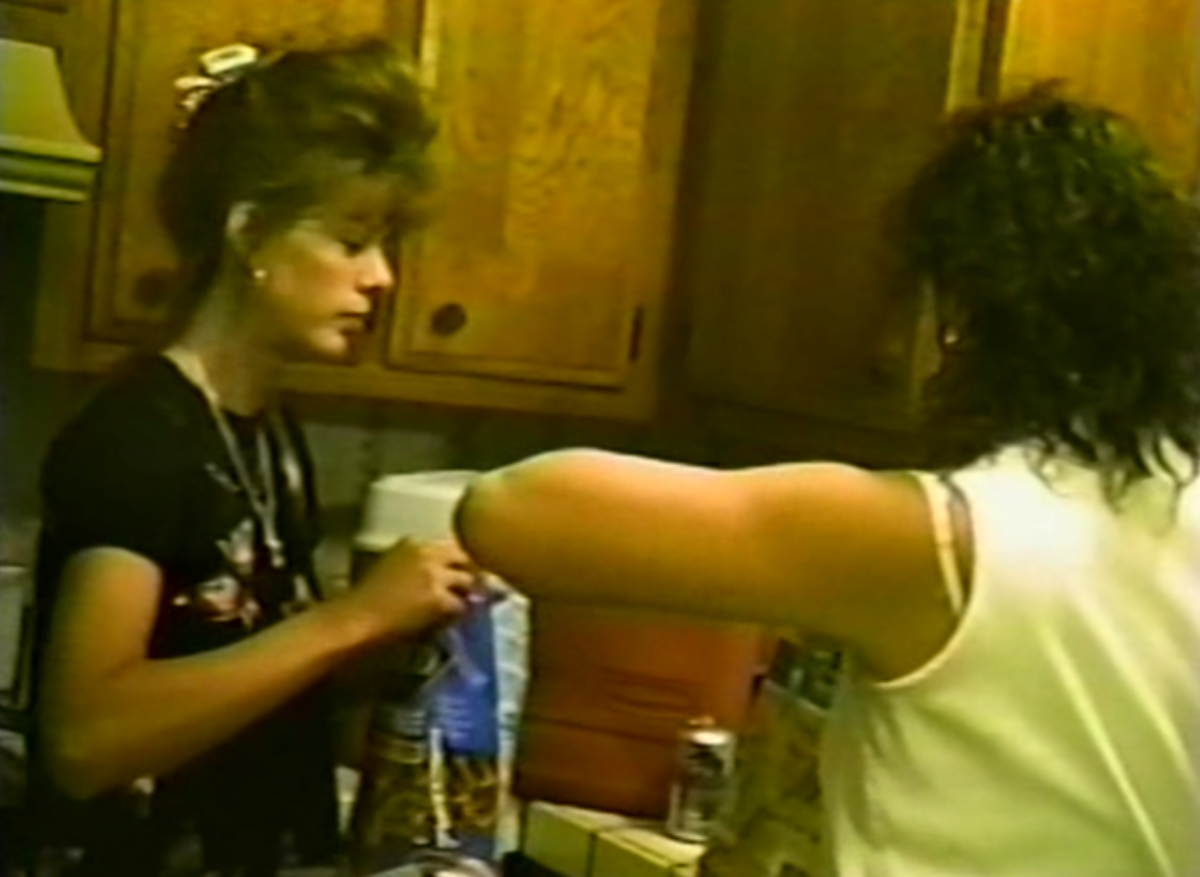
One sequence where all this aesthetic misdirection comes together is the climactic party massacre, which is both the best illustration of the film’s ambitions as well as its strongest commitment to physical reality. As the scene begins, we see the hosts set out chips and debate if they have enough drinks for everyone. Shortly thereafter, they receive their guests at the door and disperse beverages while dancing in the kitchen. This all plays out essentially in real time, presenting the minute details inherent to hosting any sort of gathering that are often excluded from finished projects. This taps into the peculiar brilliance of the film: this is the type of gathering many of us who lived through the 1990s attended, in the sort of prefab house that is immediately familiar to us from the construction of a single room. SOV horror remains a valuable field because of its ability to estrange the familiar. The places and people we may have encountered in our own lives are identifiable in the strain of filmmaking. Locations and outfits are unmolested for the camera; the everyday is transfigured onscreen. I should also note that while the rest of the film is essentially impossible to date, the footage here looks to have been shot later, feeling like it was tacked on in 1996. The visuals are clearer and don’t look to have been shot with the same camera as earlier segments, so perhaps the original 1988 production was fleshed out almost a decade later for its video release.
Nobody watches SOV horror films to be scared; in fact that isn’t why I watch horror films at all. Rather, it’s the aesthetics and touchpoints of the genre that have made me a lifelong fan past a film’s ability to frighten me. SOV horror, however, often fails on these fronts just as much as it does the basic tenets of established film construction. Only one moment in Zombies Invade Pittsburg accomplishes anything approaching realistic horror: a long scene late in the film is devoted to a mutilated body jammed into the rocks at the marina. As Dillion and Packer investigate, the camera cuts away to Stefans interviewing a woman about her missing sister, whose description perfectly matches the newest corpse. The rare use of parallel editing and the employment of a haunting, whistling soundtrack cue invest this sequence with a genuinely chilling undercurrent that seems a fluke after the preceding hour of footage.
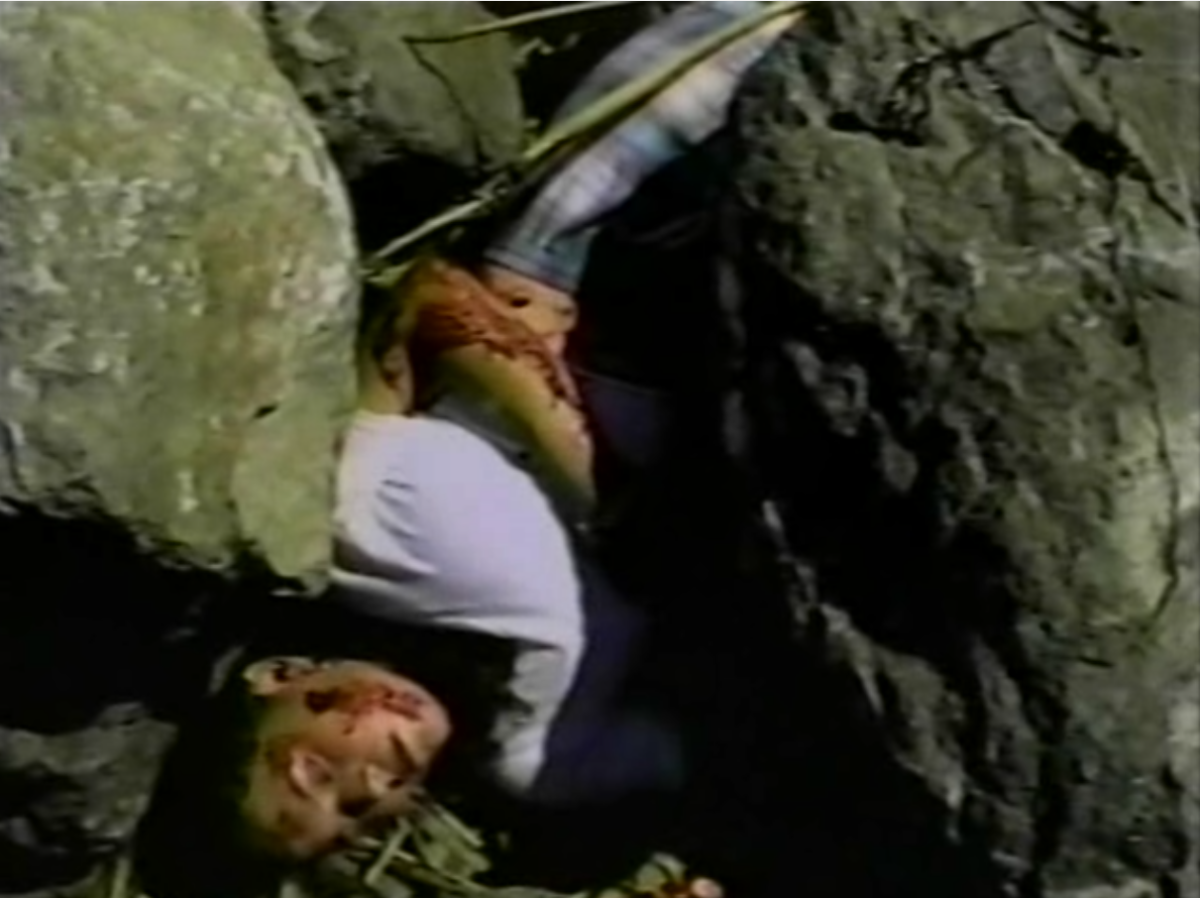
As far as the film’s effects, they largely follow the line established by the rest of the film’s construction. Turner’s zombie makeup is typically gray face paint with darkened eyes and the occasional wound, and the sole gore effect beyond spilled stage blood is a severed arm prop that appears in numerous scenes. SOV horror isn’t necessarily known for its innovative special effects; this is the domain of watery pink blood and foam body part props. However, the gore in Zombies Invade Pittsburg is essentially a study in minimalism, a means of conveying the point without necessarily taking every step to communicate it visually. In fact, that neatly sums up the entire feature’s operations. Films like this demonstrate fully how the expectations of generic tradition are both subverted and violated in the hands of amateur filmmakers, and how they can employ the most basic and bare signifiers in conveying their material. The aesthetic and spectatorial impact may be lost, but there’s never any confusion as to what we’re witnessing. Again, an elemental quality, of an entirely different sort, undergirds the film and ensures, as Jeffrey Sconce says in his 2019 essay “The Golden Age of Badness,” that Turner’s naiveté cannot fail.
One of the biggest appeals in SOV horror is the presentation of the mundane and being able to witness the mutation of everyday life as it plays out before the camera. That’s why even the most tedious works can offer moments of brilliance in their sheer ordinariness. At its core, the horror genre is the disruption of the mundane, the interruption of everyday life. Zombies Invade Pittsburg doesn’t even do this because every detail of it is so constructed and tailored to the narrative, yet the execution is rendered entirely mundane. Rather than construct his fantastic narrative around the exciting and visceral events that clearly inspired its creation, Jess Turner saw fit to fill it with banality. There’s no lack of ambition on display, which is why the decisions made onscreen are all the more baffling. It’s as if Turner instinctively knew that his audience would never be large but that those who found his film would bear with it and be engrossed despite themselves.
Filmmaking never seems to have been in the cards for Jess Turner, and his productions are sporadic. Turner seems to be involved in ministry, noting his other films are warnings to young people against the dangers of drugs and fast living. He also hosts The Jess Turner Talk Show, which I admittedly have yet to attempt watching, but is readily available online. Unlike the majority of SOV directors, Turner’s focus seems to have been on community productions rather than personal or careerist visions. None of these things stopped the film from being made, or even seemed to cause the director’s confidence to wane. Zombies Invade Pittsburg may not be an innovative film, or even a good one by anyone else’s standards, but it is an illuminating example of an independent artist forging ahead with little concern for the outside world.
For more on the history of SOV Horror, seek out Albarano’s new book, Aesthetic Deviations: Shot-On-Video Horror, 1984-1994. Purchase a copy from Headpress or Amazon
We also recommend checking out Albarano’s Experimental Kindergarten zines here
Find the complete October Horror 2023 series here:
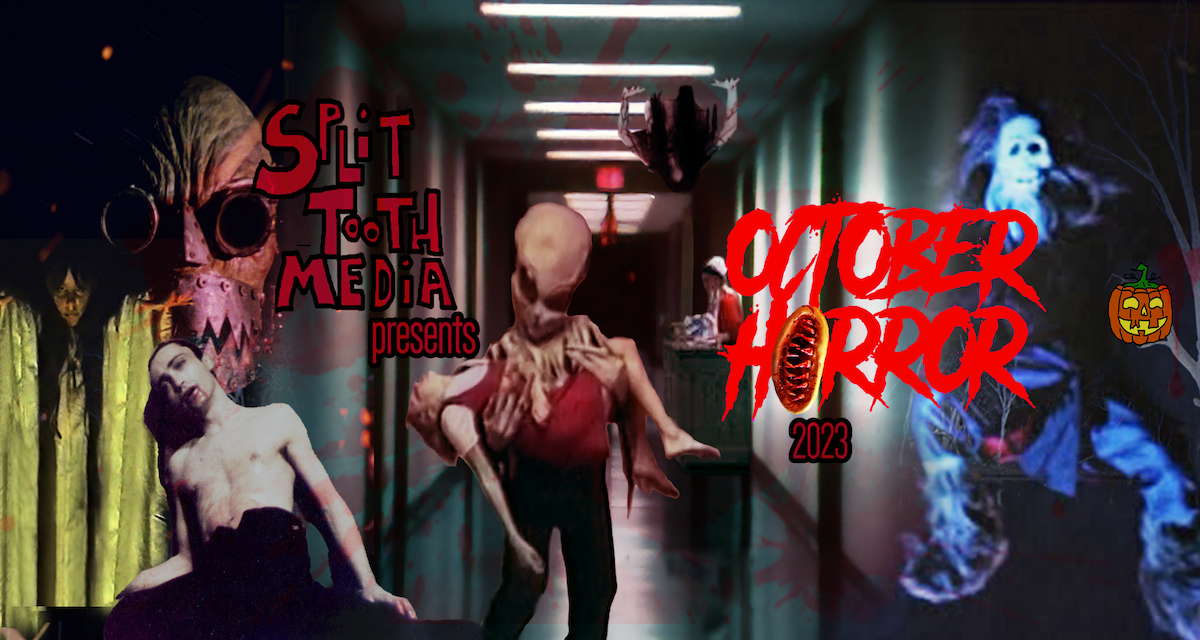
(Split Tooth may earn a commission from purchases made through affiliate links on our site.)

